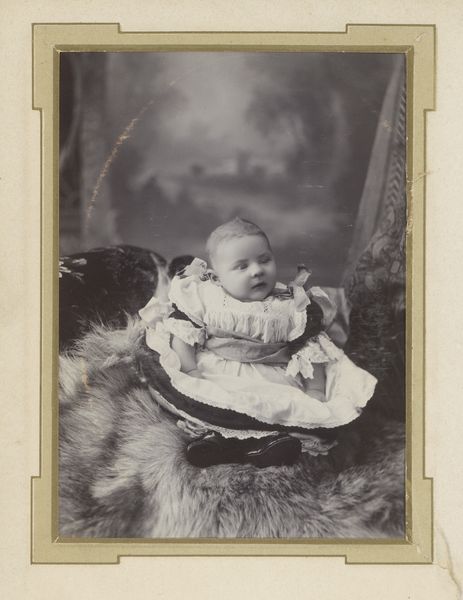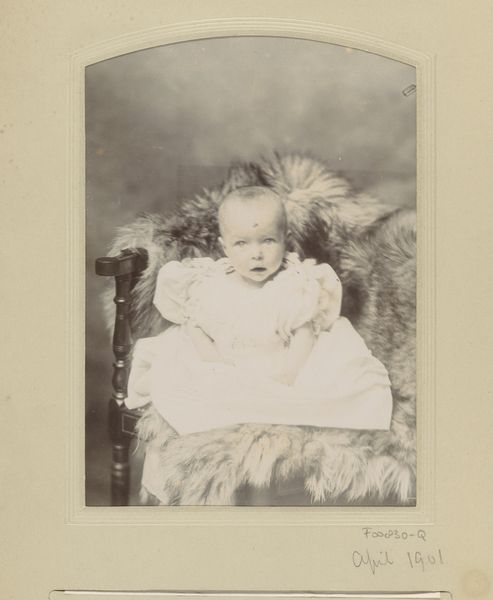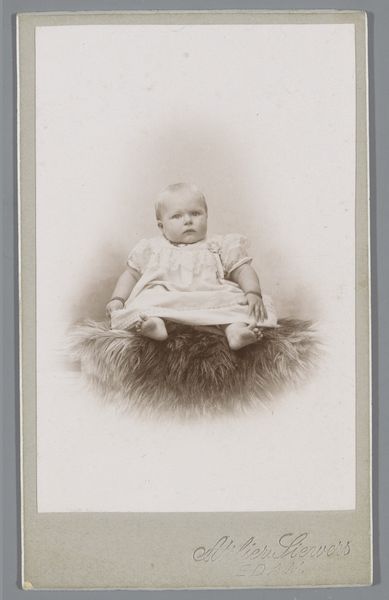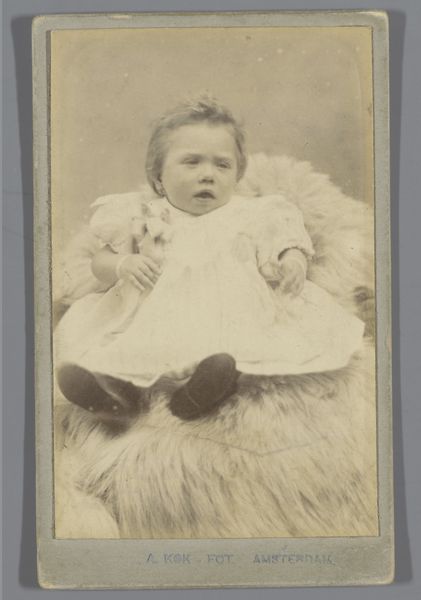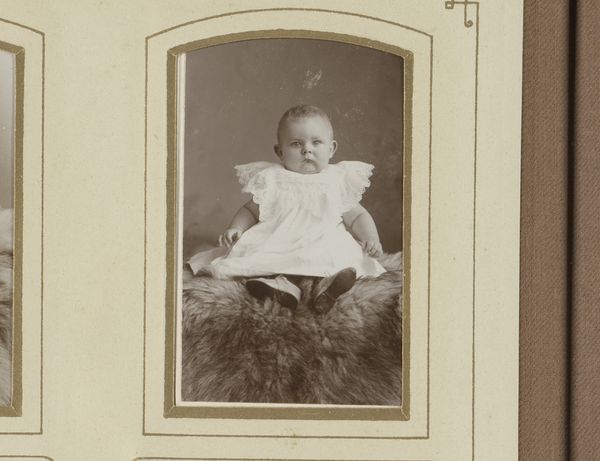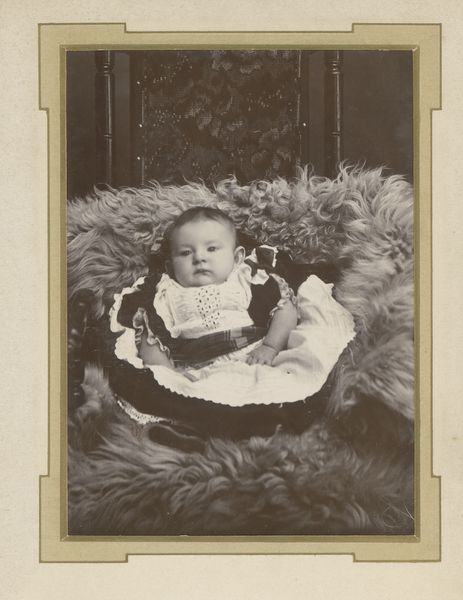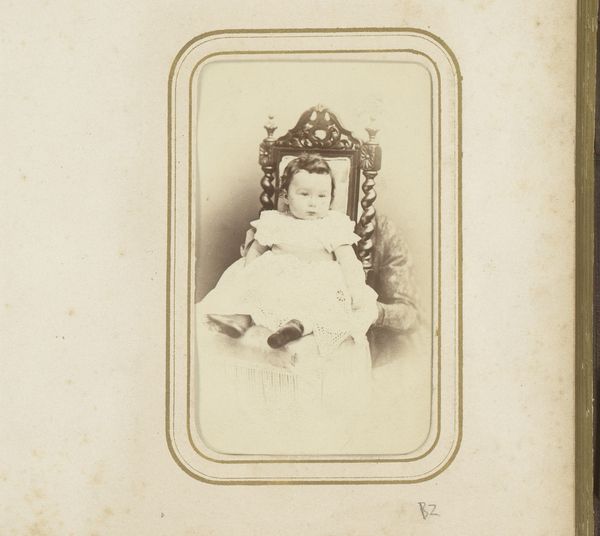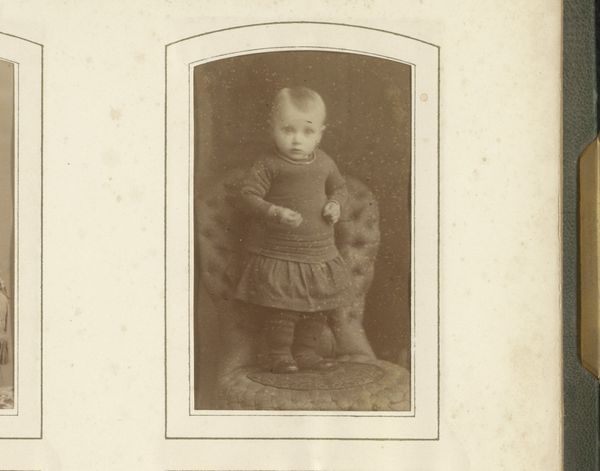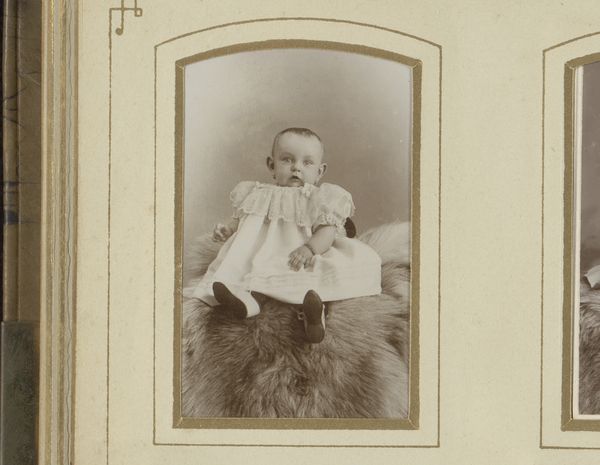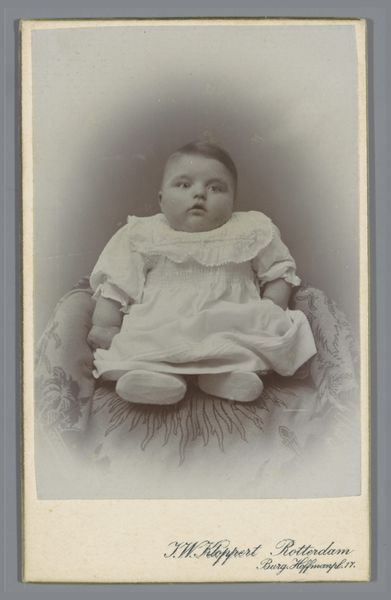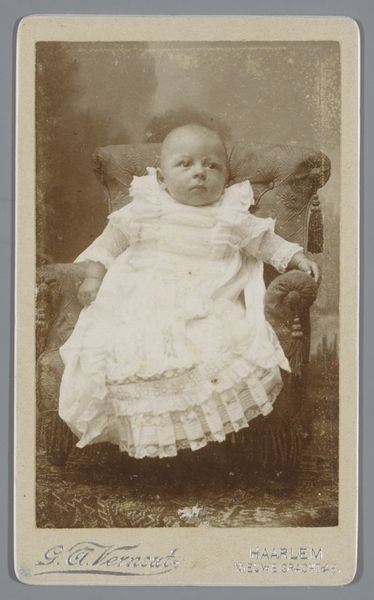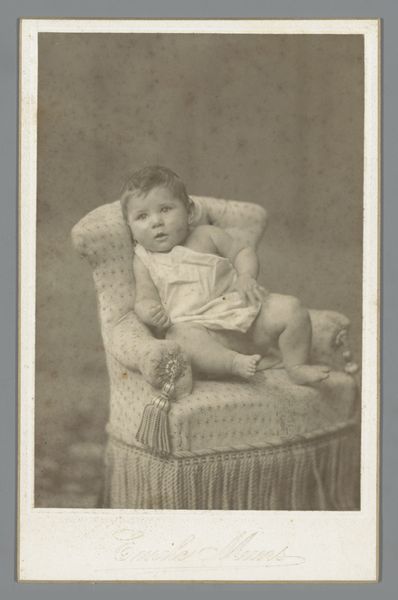
Portret van een baby in een witte jurk met bont in de hand, zittend op een stoel 1882 - 1940
0:00
0:00
photography
#
portrait
#
still-life-photography
#
photography
#
historical photography
#
19th century
#
genre-painting
Dimensions: height 135 mm, width 98 mm
Copyright: Rijks Museum: Open Domain
Curator: Let's discuss this photographic portrait of a baby in a white dress. The work dates sometime between 1882 and 1940. Editor: Well, immediately I'm struck by the textures, all that fur! It dominates the composition, enveloping this tiny person like a protective, if slightly overwhelming, cloud. The contrasts must be even more pronounced in person. Curator: It’s a compelling study in contrasts, isn't it? This was the era when photographic portraits gained popularity across society, not just among the wealthy. Note the deliberate placement on what appears to be an ornate chair, combined with the staged fur. Editor: Right, I am curious, where did the fur come from? What was the material’s cultural relevance during the late 19th, early 20th century, who owned it? Someone worked to process those hides to transform them, giving them the flexibility needed for image-making! It’s fascinating. The making, in a way, defines this moment, its access, its material constraints. Curator: The furs possibly indicate aspiration—an attempt to publicly align the child, or at least their family, with affluence, a symbol often used to convey notions of social and economic prestige. It’s all constructed: the backdrop, the chair, the clothing. The image would reflect aspirations through careful production. Editor: Agreed! And I see that aspiration embedded in the very craft of this image. Someone arranged, placed, labored. That work deserves recognition, in its own right. Curator: I find the deliberate presentation telling about the evolution of photographic practices and their democratization. This baby portrait marks a shift in how photography was understood. Editor: A democratization made possible by the materials and processes required to create an image like this. What labor! What textures! It all connects back to process. Curator: Yes, considering all aspects gives richer appreciation of how portraiture became part of a broader social expression. Editor: Indeed, analyzing materiality unveils the broader context. A valuable photograph both artistically and as an item of material culture.
Comments
No comments
Be the first to comment and join the conversation on the ultimate creative platform.
